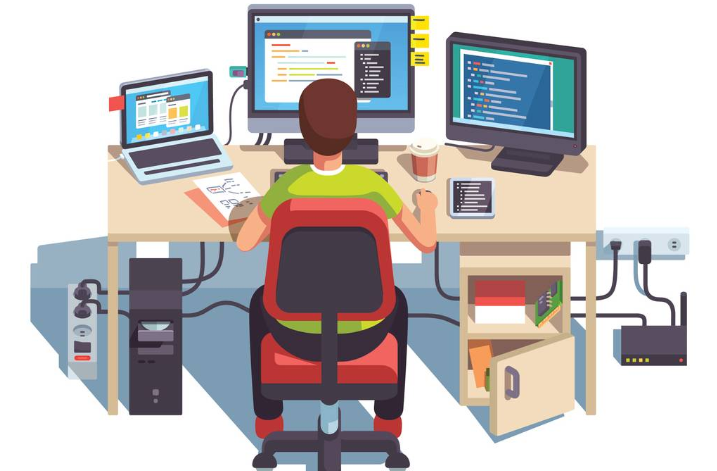Why Your Business Needs Application Modernization Services: A Comprehensive Guide

Is your business still stuck in the Stone Age when it comes to your applications? It’s time to step into the future with application modernization services! In today’s fast-paced digital world, outdated applications can hold your business back from reaching its full potential. Let’s explore why your business needs to embrace application modernization services for growth and success. Application modernization is the process of updating, modifying, or replacing existing applications to meet the current needs and standards of a business. It involves modernizing legacy systems by incorporating new technologies, architectures, and methodologies to improve functionality, performance, and user experience. The goal of application modernization is to make your applications more efficient, scalable, and adaptable to meet the changing demands of your business.
Why Do You Need Application Modernization Services?
1. Enhance User Experience
In today’s digital world, user experience is crucial for the success of any application. Outdated applications with clunky interfaces can frustrate users and drive them away from your business. Application modernization services can help enhance the user experience by improving the interface design and adding new features that make it easier for users to navigate and complete tasks.
2. Increase Efficiency and Productivity
Outdated applications often have technical limitations that can slow down processes and hinder productivity. By modernizing your applications, you can streamline workflows, automate tasks, and improve overall efficiency. This not only saves time but also reduces human error and frees up employees to focus on more critical tasks.
Benefits of Application Modernization for Businesses
Application modernization for businesses offers a range of benefits that can significantly impact their operations. By updating outdated systems, companies can enhance efficiency and streamline processes. This results in improved productivity and cost savings as employees spend less time dealing with manual tasks or system glitches.
Moreover, modernized applications enable better integration with new technologies, allowing businesses to stay competitive in today’s rapidly evolving market. With enhanced scalability and flexibility, organizations can easily adapt to changing business requirements and customer needs. This ultimately leads to increased agility and innovation within the company.
Furthermore, application modernization enhances security measures by addressing vulnerabilities present in legacy systems. This helps protect sensitive data from potential cyber threats and ensures compliance with industry regulations. Overall, embracing application modernization services is essential for businesses looking to thrive in the digital age.
Common Challenges Faced by Outdated Applications
Outdated applications can pose a myriad of challenges for businesses. One common issue is compatibility issues with newer systems and software updates, leading to functionality gaps and inefficiencies. This can hinder productivity and limit the ability to adapt to changing market demands.
- Security vulnerabilities are another major concern with outdated applications. With cyber threats evolving rapidly, older software may lack essential security patches and updates, leaving sensitive data at risk of breaches or attacks.
- Performance bottlenecks are also prevalent in outdated applications, causing slow loading times, crashes, and overall poor user experience. This can result in customer dissatisfaction and loss of competitive edge in the market.
- Moreover, maintaining legacy systems often becomes increasingly costly over time as support and maintenance expenses rise. Without modernization efforts, businesses may find themselves stuck in a cycle of high IT costs without reaping the benefits of updated technologies.
- Outdated applications can also hinder innovation and hinder the ability to leverage new technologies. This can limit a company’s growth potential and make it difficult to keep up with competitors who are utilizing more advanced systems.
- Lastly, outdated applications can also impact employee morale and satisfaction. Using outdated technology can make tasks more difficult and frustrating for employees, leading to decreased productivity and job dissatisfaction. This can also make it challenging to attract and retain top talent, as modern technology is often a key factor in employee satisfaction.
Understanding the Process of Application Modernization
Application modernization is a strategic process aimed at updating and improving outdated software applications. It involves re-architecting, re-platforming, or refactoring the existing systems to enhance performance, functionality, and user experience. The first step in application modernization is conducting a thorough assessment of the current software landscape to identify areas that need improvement. This includes evaluating the technology stack, architecture, scalability issues, security vulnerabilities, and compliance requirements.
Once the assessment is complete, a comprehensive modernization strategy is developed outlining the goals, timeline, budget considerations, and key milestones for the project. The next phase involves selecting the right tools and technologies to support the modernization efforts while ensuring minimal disruption to business operations.
Throughout the process of application modernization, regular testing and quality assurance measures are implemented to validate that the updated applications meet performance standards before deployment. Continuous monitoring post-implementation helps in identifying any potential issues and ensuring optimal functionality over time.
Types of Application Modernization Services Available
When it comes to application modernization services, businesses have a range of options to choose from based on their specific needs and goals.
- One common approach is re-platforming, which involves moving applications to a new platform without changing the codebase. This can help improve scalability and performance while reducing maintenance costs.
- Another popular service is re-architecting, where applications are redesigned using modern architecture principles like microservices or serverless computing. This can enhanceflexibility and agility in responding to market changes swiftly.
- Furthermore, businesses can opt for refactoring services that involve restructuring existing code for better maintainability and efficiency. This approach often focuses on improving code quality and simplifying complex systems.
- Containerization is also gaining popularity as a modernization service, allowing applications to be deployed consistently across different environments with ease. By encapsulating software into containers, businesses can achieve greater portability and scalability.
Overall, understanding the various types of application modernization services available is crucial for businesses looking to stay competitive in today’s fast-paced digital landscape.
Factors to Consider When Choosing a Service Provider
When considering application modernization services, choosing the right service provider is crucial for the success of your business. First and foremost, expertise and experience are key factors to consider. Look for a provider with a proven track record in application modernization projects.
Additionally, assess the scalability of the services offered by the provider. Ensure that they can accommodate your current needs as well as future growth requirements.
Consider the technology stack and tools used by the service provider. Compatibility with your existing systems is essential for a seamless transition during the modernization process.
Communication is another important factor to take into account. A transparent and open line of communication between you and the service provider can help avoid misunderstandings and delays in project delivery.Lastly, don’t forget about cost-effectiveness. While budget is important, prioritize value over price when selecting an application modernization service provider that aligns with your business goals and objectives.
Case Studies and Success Stories of Companies that Utilized Application Modernization Services
Let’s dive into some real-world examples of companies that have leveraged application modernization services to transform their businesses.
- Company A, a global retailer struggling with outdated legacy systems, partnered with a service provider to modernize its applications. The result? Increased operational efficiency, improved customer experience, and enhanced scalability.
- Company B, a financial institution burdened by siloed data and slow processes, underwent an application modernization initiative. By migrating to cloud-based solutions and adopting microservices architecture, they achieved faster transaction processing times and better regulatory compliance.
- Lastly, Company C, a healthcare organization facing integration challenges across multiple platforms, opted for application modernization. This move enabled seamless data sharing among departments leading to enhanced patient care and streamlined workflows.
These success stories highlight the transformative power of application modernization in driving innovation and staying competitive in today’s digital landscape.
Conclusion
Embracing application modernization services is crucial for businesses looking to stay competitive in today’s fast-paced digital landscape. By upgrading outdated applications, companies can improve efficiency, enhance user experience, and boost overall productivity.
With the evolving technology trends and changing customer demands, it is essential for businesses to adapt and innovate continuously. Application modernization not only future-proofs your systems but also enables you to leverage new opportunities for growth and expansion.
In conclusion, investing in application modernization services is a strategic move that can lead to significant business benefits in the long run. Stay ahead of the curve by embracing modern solutions that drive innovation and drive business success.




